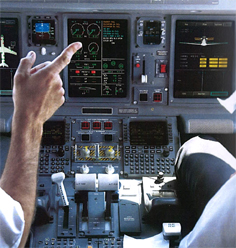
immediate corrective actions and decisions required for airplane
recovery are sometimes delayed by the flightcrew. Some of the
reasons for the delay include:
- legitimate concern for passenger and crew safety following large control movements
- previous training emphasizing altitude loss of only a few hundred feet even for high altitude stalls
- anxiety associated altitude violations and other air traffic
- less experience with manual flight control and
- even the de facto acknowledgement of loss of control represented by loss of altitude.
While the magnitude of required flight control input will vary by airplane design for recovery, flightcrew should be trained to expect a longer recovery time and greater altitude loss while the airplane accelerates to gain airspeed following high altitude stall.
Since there is no detailed checklist or procedure telling the pilot when to start the stall recovery and how much back pressure should be used for return to level flight after stall recovery, these techniques need to be adequately trained. Pilots should also be aware that an aggressive stall recovery and subsequent altitude recapture can result in a secondary stall during stall recovery.
Comments: